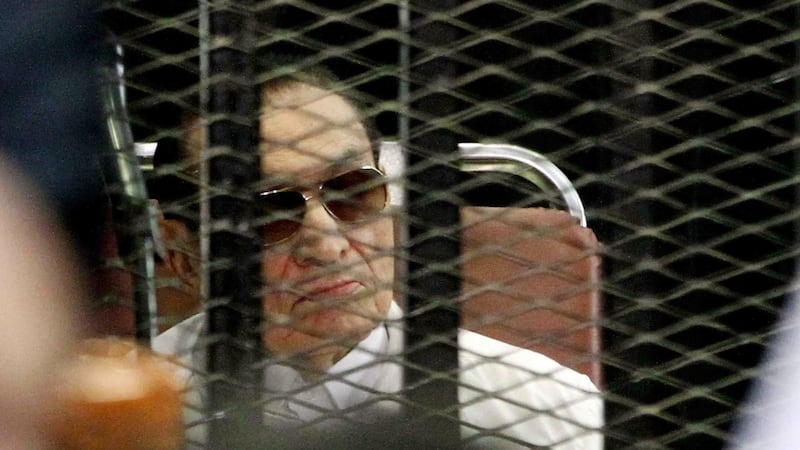As dusk stole over Egypt a decade ago on Thursday, millions gathered in its squares, held their breath, waiting to see if after 18 days of mass protest their 30-year president Hosni Mubarak would resign.
At 6pm on February 11th, Egyptians listened in silence when grim-faced vice-president Omar Suleiman, flanked by an army officer, appeared on national television to say Mubarak had "decided to give up the office of president" and hand power to the military. Suleiman's final words were drowned out by a nationwide roar of joy and high-pitched ulalating.
Egyptians waved flags, wept and chanted “the people ousted the regime” and “hurriyeh hurriyeh! Freedom! Freedom!” Foreign satellite channels caught the action city by city for global cheerleaders, captivated by the uprising Egyptians called “revolution”.
Cries of “goodbye, goodbye”, broadcast from Cairo’s famous Tahrir (Liberation) Square echoed through high rises. Egyptians of all ages, backgrounds, and social status laughed, hugged, and sang Biladi (my country), the Egyptian national anthem. Cairo’s dark and empty streets instantly swarmed with cars flashing lights and hooting horns. Celebrations stretched throughout the night.
Vascilation in the military high command earlier that day had produced abrupt mood swings in the throng waiting peacefully but impatiently in the wide expanse of Tahrir Square. Fighter jets and helicopters flew low to intimidate Egyptians who had braved battering, assault and arrest but could not be dislodged.
During a televised address on February 10th, Mubarak did not resign but arrogantly told his children to go home, creating confusion among generals and protesters, whom a friend, Youssef, called “uprisers”. Men, women and families with children flowed into Tahrir, determined to stay until he had gone.
Defeated in the tussle with Egypt’s millions, the army removed Mubarak although he did not personally concede defeat. A former air force chief marshal, he was one of their own.
He was lifted from his besieged palace by helicopter to Almaza airbase and flown to his mansion at the Red Sea resort of Sharm el-Sheikh. Uprisers had named the 11th the Friday of Departure.
The next morning, cheerful Egyptians flocked to Tahrir. They bore brooms, buckets, tins of paint, and rubbish bags. They cleared rubbish, painted black and white strips on curbs, scrubbed graffiti from statues and raked the grassy traffic island at the centre of Tahrir. Teenage girls wielding brooms wore vests stating, “We are building Egypt”.
The uprising began on January 25th, National Police Day, marked traditionally by small demonstrations against police brutality. Activists expected 50 people to turn up in one square and 150 in Tahrir. Encouraged by the ousting of Tunisian president Zin al-Abidin Ben Ali 11 days earlier, 15,000 occupied the square.
They returned on the 26th and 27th to battle security forces. On the 28th, hundreds of thousands marching to Tahrir were met by black-clad, helmeted riot police attacking with tear gas, live rounds, birdshot and water cannon.
When ordinary police were withdrawn from the streets, neighbourhood watches formed. The next day, weary locals slept away the morning but by afternoon 50,000 were back in Tahrir Square. Their numbers swelled day by day, reaching a million. Thousands rallied outside parliament and the high court.
Karin, a German colleague, and I walked every morning along the Gezira island bank of the sluggish brown Nile to Qasar el-Nil Bridge. As we crossed to Tahrir we greeted the 19th century bronze lions at both ends.
One day a young man asked us to pass between two lines of drummers who heralded our arrival. Journalists were welcome.
Although there was no overall leadership, managers recruited volunteers to check bags for weapons at Tahrir’s entrances, clear rubbish, and post photographs of martyrs on bulletin boards. The number of those swelled to 846 by the time Mubarak left.
Upper-class women came equipped with folding stools. Donors provided food and water to uprisers camped in the square. Little boys wheeled bicycles, handlebars festooned with bags of takeaway containers of spaghetti and bean stew. Bottled water was distributed to everyone.

Lawyers, judges, army officers and trade unionists gathered before the podium where all comers were permitted to speak their minds for the first time in decades. Asked why he was protesting, a man in soiled work clothing replied, “Mubarak stole $7 billion.”
“Where did he learn this?” I asked.
“From the Guardian,” he replied, although he spoke only Arabic.
A field hospital manned by a poet called Horus after the ancient Egyptian god and medical students tended wounded from late-night and early-morning assaults by Mubarak’s agents. They also arrested uprisers and journalists on Tahrir’s approach roads.
Tahrir’s defenders
Karin and I would have been snatched by two thugs but a nice young Egyptian intervened and carried us away in a creaking black and white taxi.
On February 2nd, men mounted on camels and horses assaulted protesters with whips, knives and clubs. By the next morning, Tahrir’s defenders had armed themselves with piles of paving stones and lengths of plastic pipe from the adjacent construction site. To warn of an impending raid, a lookout with a rod beat on a lamp pole.
Tahrir was non-sectarian. Christians formed protective shields around Muslims when they performed daily prayers.
On February 6th, the Sunday of Martyrs, Irish ambassador Isolde Moylan came to the square where we attended Coptic Christian Mass along with reverent Muslims. We sang a prayerful Biladi after the closing "Amin".
For Egyptians the uprising was the best of times; iron-fisted military rule since has made today the worst of times.
Still, the spirit of Egypt's uprising reigns over Egyptian hearts and is alive and well in Lebanon, Tunisia, and Iraq, where uprisers challenge regimes they seek to uproot.




















